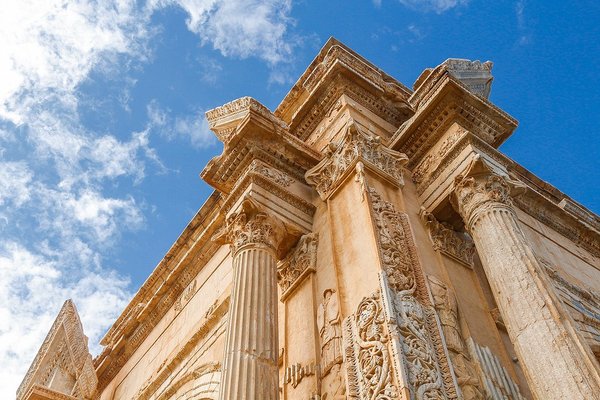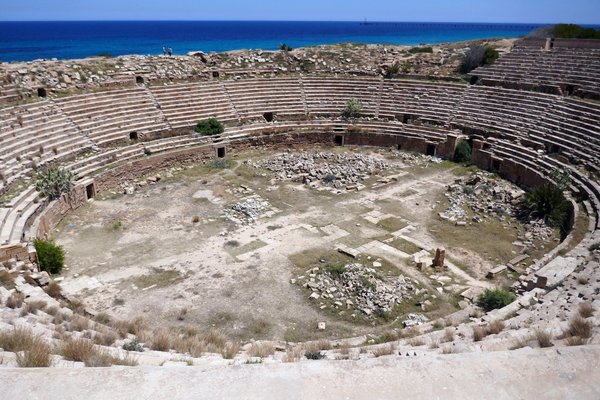Libya
Leptis Magna
The Archaeological Site of Leptis Magna comprises the remains of the Phoenician port Lpgy, which was integrated into the Roman Empire in 46 BCE.
When Septimus Severus, who was born here, became Roman emperor in 193 CE, he remodeled the urban plan of Leptis Magna. He added major monuments in a style influenced by African and Eastern traditions. It subsequentially became one of the most beautiful cities of the Roman world. Its Antique port is a fine example of Roman technology.
Community Perspective: Among the best of all “Roman ruins”, especially for its state of completeness.
Site Info
Official Information
- Full Name
- Archaeological Site of Leptis Magna (ID: 183)
- Country
- Libya
- Status
-
Inscribed 1982
Site history
History of Leptis Magna
- 2016: In Danger
- Simultaneously with the four other World Heritage sites of Libya "because of damage caused by the conflict affecting the country and the threat of further damage it poses".
- 1982: Inscribed
- Inscribed
- In Danger
- Simultaneously with the four other World Heritage sites of Libya "because of damage caused by the conflict affecting the country and the threat of further damage it poses". Since 2016
- Type
- Cultural
- Criteria
- i
- ii
- iii
Links
- UNESCO
- whc.unesco.org
- Official
-
- temehu.com — Leptis Magna
- Related
-
- livius.org — Lepcis Magna: Cardo - by Livius, Articles on Ancient History
- galenfrysinger.com — Travel photos
All Links
UNESCO.org
- whc.unesco.org — whc.unesco.org/
Official Website
- temehu.com — Leptis Magna
Related Resources
- livius.org — Lepcis Magna: Cardo - by Livius, Articles on Ancient History
- galenfrysinger.com — Travel photos
News Article
- Sept. 26, 2021 france24.com — Jewel of Roman Empire lies neglected in Libya chaos
- Dec. 23, 2016 thenational.ae — The unlikely saviours of Libya’s Roman remains
- Aug. 8, 2016 libyaobserver.ly — Libya's Antiquities Department refutes UNESCO report on Leptis Magna
- June 14, 2011 allvoices.com — Gaddafi hides rockets, munitions in Leptis Magna
Community Information
- Community Category
- Archaeological site: Ancient Rome
- Secular structure: Military and Fortifications
Travel Information
Red Zone Travel Advisory
Recent Connections
-
Perfect Inscriptions
1982 -
Red Zone Travel Advisory
Libya fully off-limits -
Locations for playing sport
Roman circus
Connections of Leptis Magna
- Geography
- History
-
-
Ancient Roman colonies
-
Phoenician world
Founded by Phoenician colonists ca. 1100 BC
-
- Architecture
- World Heritage Process
-
-
First inscriptions
Libya: three inscriptions in 1982, with Archaeological Site of Leptis Magna as the lowest number -
Perfect Inscriptions
1982
-
- Religion and Belief
- Human Activity
-
-
Brothels
-
Sea Ports
-
Locations for playing sport
Roman circus
-
- Constructions
-
-
Latrines
See www.mmdtkw.org
-
Theatres and Opera Houses
Roman theatre -
Lighthouses
The base of a 30-35m high lighthouse. It was a twin of one of the Seven Wonders of the Ancient World, the Pharos of Alexandria.See www.flickr.com
-
Roman amphitheatres
Roman amphitheatre -
Tetrapylon
Severan Arch -
Triumphal Arches
Arch of Tiberius, Arch of Severus -
Macellum
-
Baths
Roman baths
-
- Timeline
-
-
Built in the 3rd century
Septimus Severus renewed the town after he became Roman emperor in 193; in 203 an arch was erected in his honour, and "At the end of his 203 visit Septimius Severus gave orders for a general upgrade to the facilities of Leptis and in particular for the construction of a series of public buildings"
-
- Science and Technology
- Visiting conditions
-
-
Red Zone Travel Advisory
Libya fully off-limits
-
News
- france24.com 09/26/2021
- Jewel of Roman Empire lies neglect…
- thenational.ae 12/23/2016
- The unlikely saviours of Libya’s R…
- libyaobserver.ly 08/08/2016
- Libya's Antiquities Department ref…
Recent Visitors
Visitors of Leptis Magna
- Alexander Barabanov
- Ali Zingstra
- A. Mehmet Haksever
- Ammon Watkins
- Artur Anuszewski
- Bill Maurmann
- Christian Wagner
- Emili Xaus
- Eric Lurio
- Eva Kisgyorgy
- Grzegorz Andruszkiewicz
- Harry Mitsidis
- henryjiao18
- Iain Jackson
- Janos
- Luis Filipe Gaspar
- MarcoB_0
- Marcobrey
- Martin
- Michael Novins
- Mikko
- Patrik_globe
- pete_simms
- Pieter Dijkshoorn
- RobRos
- Roger Ourset
- Sergio Arjona
- Solivagant
- Szucs Tamas
- Thomas Buechler
- Timothy C Easton
- Vanessa Buechler
- Westwards
- Wo_ko
Community Reviews
Show full reviews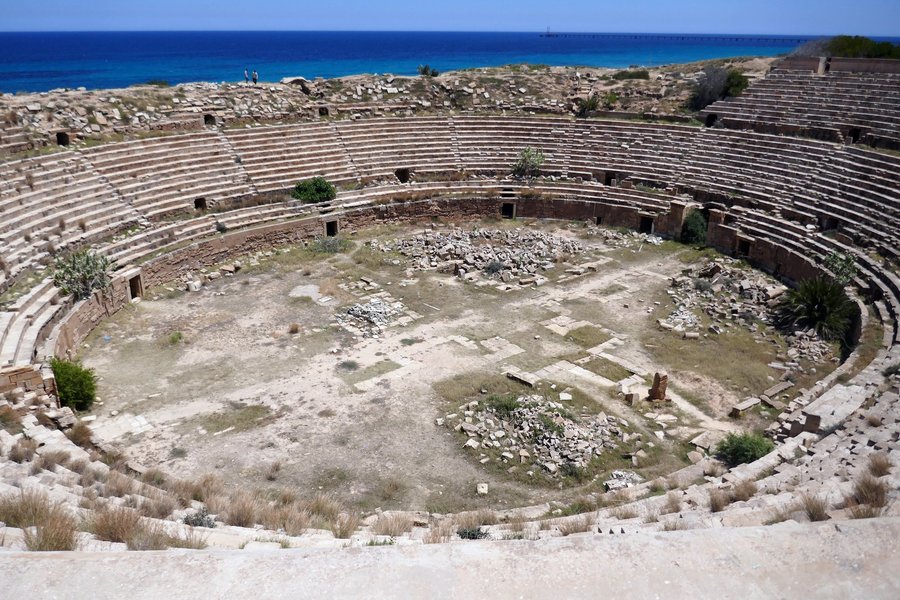
It has been a long time since the last review of Leptis Magna. This is not too surprising given that it has been on the In Danger list for almost a decade and even before the civil war, Libya was not an easy country to visit. I was able to visit Leptis Magna in May 2025 on a standard 4-day Libya tour with a couple of friends using the company Rozaria. At the time of my visit Libyan tourism seemed to be expanding after a couple years of relative stability, the evisa system had been successfully rolled out and mostly debugged and a number of new tour operators had appeared on the scene to compete for business.
Leptis Magna needs very little introduction, the average WHS or Roman Empire enthusiast will most likely have heard of it and descriptions of the site are typically filled with superlatives. It had been on my wish list for a long time and I was excited to finally visit after 2 previous failed attempts to secure a visa (in 2007 and 2023). Having visited many other roman ruins over the intervening years the question became would Leptis Magna still live up to the hype? In short, the answer is yes. The longer answer is a little more nuanced. There are no unique elements specific to Leptis Magna itself. Colonnaded streets, forum, baths, theatre, arches, market area, port, mosaics, hippodrome, amphitheatre, etc are all present and in all honesty more outstanding examples of each of …
Keep reading 2 comments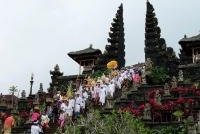
I was at leptis many times and have lots of pictures to share, was there in the early eighties when working in Misrata,I have seen many Roman cities but this is undoubtably the best, this gem is a must see for enthusiasts. (If you get the chance to enter Libya?)
Tony
Keep reading 0 comments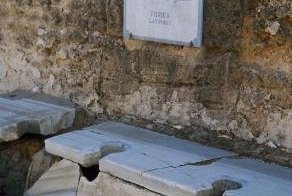
What did the Romans ever do for us? Well, there are some beautifully preserved Public Toilets at Leptis Magna (see photo) which show a degree of civilisation unmatched in many places around the world today!
Letpis Magna also has its fair share of triumphal arches, temples, baths, theatres, mosaics etc but it is perhaps the “ordinary” things of life which bring home most what life was like and the continuity until today.
Apart from Pompeii I do not know of any ruined roman city which is as “complete” as Leptis Magna. You are going to get your fill of “Roman ruins” in Libya – The others each have their “gems” but Leptis as a whole is unmatched and should not be missed.
Keep reading 0 comments
